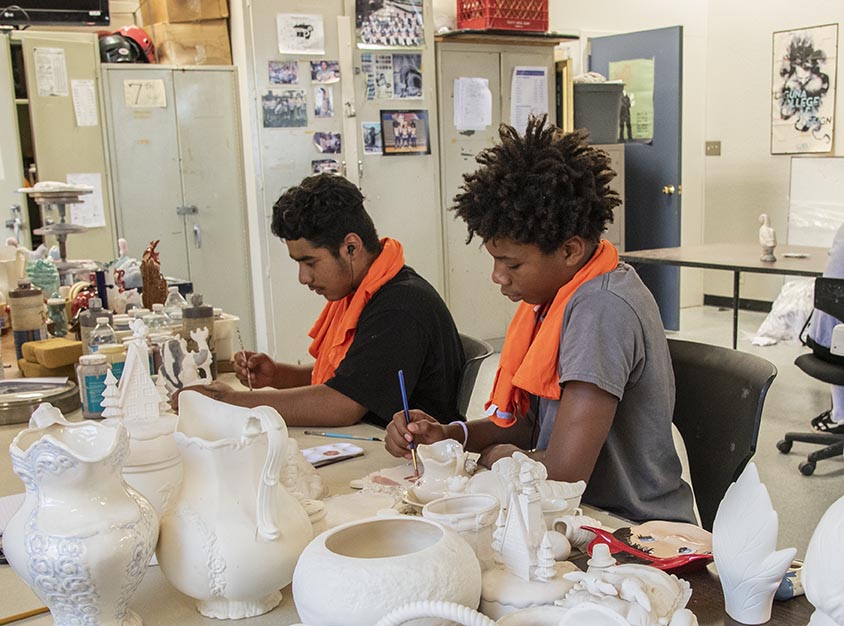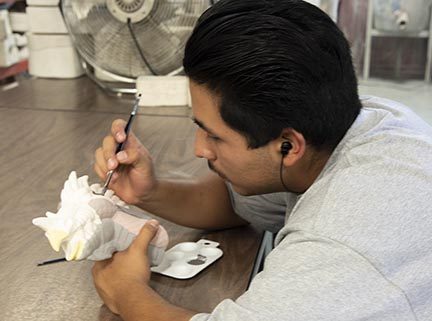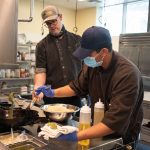Teens Find a Creative Outlet in Ceramics Class

Being a teenager at Boys Republic has got to be difficult. Most of these teens come from backgrounds of abuse and neglect. They have spent most of their young lives cultivating tough exteriors and have grown accustomed to a certain way of life. When students arrive at Boys Republic, they are expected to actively participate in the treatment program and school, which requires them to be accountable for their behavior and to help their peers confront their own behavioral issues. While most students, under proper adult guidance, successfully assist one another in these activities, it is still a lot to take on. That is why recreational activities are built into the program. The ceramics class is one activity where students can practice proper classroom behaviors while doing something creative with their hands.
Ceramics, taught by Duane Scott, takes place in a cool and bright classroom that’s tucked away from the rest of campus. Upon entering, students are greeted with dozens of projects in various stages of completion, all laid out on display. The room is large so the students can spread out. Smooth jazz plays in the background which creates a peaceful environment where students can relax and focus on the activity at hand.
“We start them out easy,” says Mr. Scott, as he moves around the classroom making suggestions to the students about colors and technique. Students start class by choosing a premade, unfinished, clay piece to paint. Each teen quietly concentrates on applying the paint evenly to the surface of the clay. Mr. Scott instructs his class on how to properly apply different colors for the best results. The quality of the work varies at first, with some colors blending together and some lines a little crooked. Over time, the students refine their technique and measurable improvements can be seen.
As they progress in their ability, Mr. Scott gives the students more responsibility. Eventually, the students learn the ins and outs of slip casting ceramics. Mr. Scott gradually teaches them to mix the liquid clay, pour it into molds, and finally, fire their finished pieces in the kiln. This last step is the one the students look forward to the most.
“How does it get all glossy like that?,” one student named Fernando asks about a project that caught his eye. “That one is dipped in a clear coat,” Mr. Scott answers. He goes on to tell the students how different applications will give the ceramic pieces different textures after being fired in the kiln. Fernando decides that he wants his piece to be glossy and sets to work applying the clear coat.
“I thought I wouldn’t like this, but I am learning something different and it’s kind of cool. I’m going to give my piece to my mom,” says Fernando, showing off a flat, hand-mirror shaped piece with his mother’s name painted on it. While taking ceramics class certainly teaches the students a skill, the benefits are much more than that. Working with their hands on a project lets them take a mental break while boosting their self-esteem because they end up with tangible pieces to take home to their families as a reward for their focus and time.






